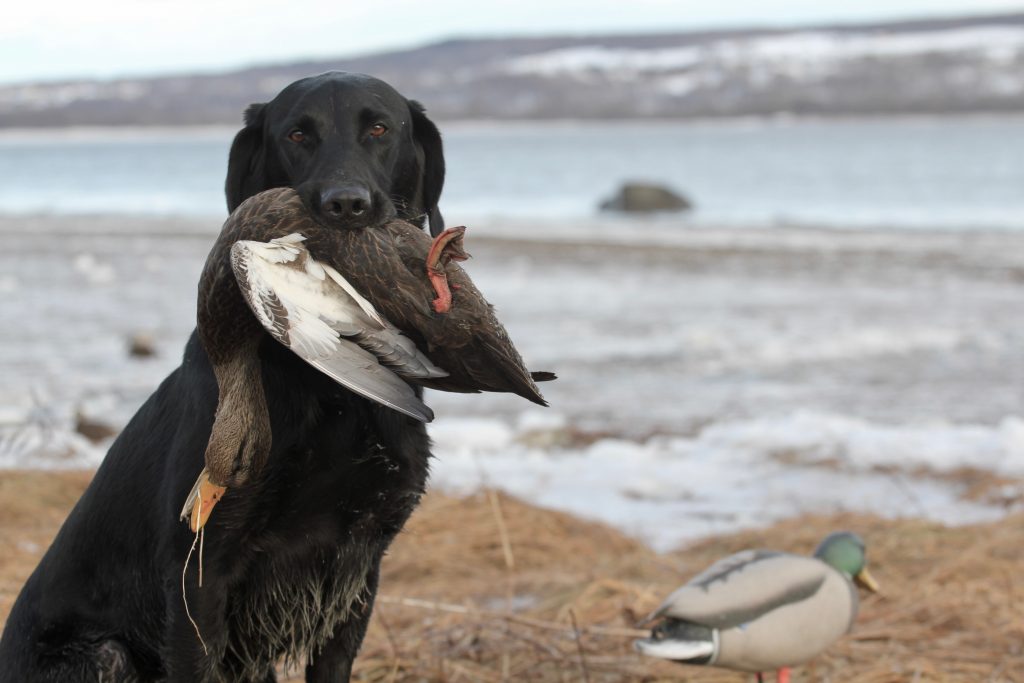Like humans, the ideal diet of working dog is based on a variety of factors. The intensity and duration of activity, desired outcomes, environment and the individual energetic requirement of the dog. In all cases, it’s vital to assess the overall performance requirements of the canine and tailor the diet and more specifically, certain nutrients to meet the needs of the dog.
The main contributors of energy to a dog’s diet are protein, fat and carbohydrates. Together, they make up the major energetic constituents in any food. Their variable contributions affect the overall performance of an animal.
If the major energy contributions come from protein, fat and carbohydrates in a canine diet, what is the relative energetic value of each? In canines, fatcontributes 8.5 kcal/g and protein and carbohydrates contribute 3.5 kcal/g each. Despite the energetic contribu- tion of protein and carbohydrates being equal, they each play different roles for canine performance.

PROTEIN
Proteins are involved in EVERYTHING in the canine body, from muscle development and recovery, to cell wall structure, to enzymatic reactions. The building blocks of protein are amino acids, some of which can be synthesized by the body of the dog, but 10 of them cannot. These are your essential amino acids and they must be ingested in the dog’s diet.
FAT
Fats, having a higher caloric contribu- tion than the other constituents, are the major energetic driver in athletic dogs. Fats are made up of fatty acids that can be directly utilized as a source of energy.
There are several classifications of fatty acids, such as saturated and non-saturated and poly unsaturated fatty acids (PUFAs), essential fatty acids and omega 3s and 6s, all of which play different structural and functional roles within the body. Similar to protein, fats play pivotal roles throughout the body of the dog, encompassing a wide range of functions from insulation, to vita- min absorption, to proper functioning of the central nervous system. We will discuss these a little more later.
CARBOHYDRATES
Although carbohydrates have a place in the canine diet. Working dogs utilize different energetic pathways to fuel their bodies than humans do. The role of carbohydrates in the dog diet depends on activity intensity and endurance. The base unit of a carbohydrate is glucose, a read- ily accessible form of energy. As carbo- hydrates play a purely energetic role in a dog’s diet, carbohydrate requirement is determined by activity level. Interestingly, high levels of carbohydrates commonly found in commercial canine diets are not necessarily what is best for working dogs.
Research shows different canine ac- tivities require different combinations of protein, fats and carbohydrates. As you might imagine, the requirements of a racing greyhound vary greatly from that of an Iditarod sled dog, which varies again from the requirements of a detection canine, who must also rely on its senses for task completion on top of the energetic demands of a search. Even then, the search is a mixed activity that might consist of both sprinting and endurance. Simply put, increases in energy expenditure and carbo- hydrate requirement is based on duration of exercise, not the intensity.

THE HIGH FAT ADVANTAGE
A high fat diet can benefit in a number of ways. Weight maintenance, increased palatability of food, decreased food volume for satiation and increased energy levels. That said, research into the effect of diet on a dog’s nose is relatively complex. Some studies have found that fatty acid composition can have an influence on the detection ability in scent trained dogs from foxhounds to hunting dogs and service dogs. Unsaturated fats, oftentimes rich in Omega 3s and 6s, such as PUFAs, have shown to increase the rate of detection thresh olds in Labradors given a diet topped with Maize oil.8
Likewise, hunting English Pointers fed a diet rich in PUFAs had a more successful rate of bird finds. Studies with dogs on treadmills have shown that endurance performance and olfactory sensitivity increase with increasing intake of dietary fat. This means that as dietary fat goes up, as will a dog’s physical stamina and scent ability, particularly when fed diets rich in animal-based fats.
Why is this?
It is believed that the PUFAs alter the membranes of the olfactory organs in a canine’s nose, making the dog more sensitive to scents. Further research suggests increasing the level of unsaturated fats and decreasing the level of saturated fats in a dog’s diet could heighten a his ability for detection.
Interestingly, regular exercise has also been found to play a role, by increasing “scent stamina. Overall diet affects the core body temperature. The diets rich in PUFAs allow canines to return to normal body temperature faster than those higher in saturated fats. Other factors that can influence a dog’s ability to detect smell range from the microbes that live in the gut and nasal cavity of the dog to serotonin levels in the body. There is still much to learn about the intricate workings of a dog’s sense of smell.
HYDRATION, HYDRATION, HYDRATION
Adequate water is one of the major influencers on a working dog’s ability to smell. By keeping the nose moist, neural scent signals are better able to travel to the brain. The quantity required depends on these mentioned environmental factors. Temperature, humidity, barometric pressure, the canine’s ability to cool off by panting and the duration of exercise.
Other Tips
- Look for a food with finely ground ingredients. Why? The finer the grind, the better the digestibility of the food.
- When possible, purchase from a primary manufacturer.Quality is more likely to be continually and consistentlymonitored by people who really know the product.
- Packaging matters. Do your best to maintain food inairtight conditions. If you use a reusable food con- tainer, wash it between uses. Oxygen exposure breaks down fats used for detection and energy.
You can also read : Diets of endurance